A Colt SAA Flat-Top Clone
From Dixie Gun Works
feature By: Mike Nesbitt | December, 17
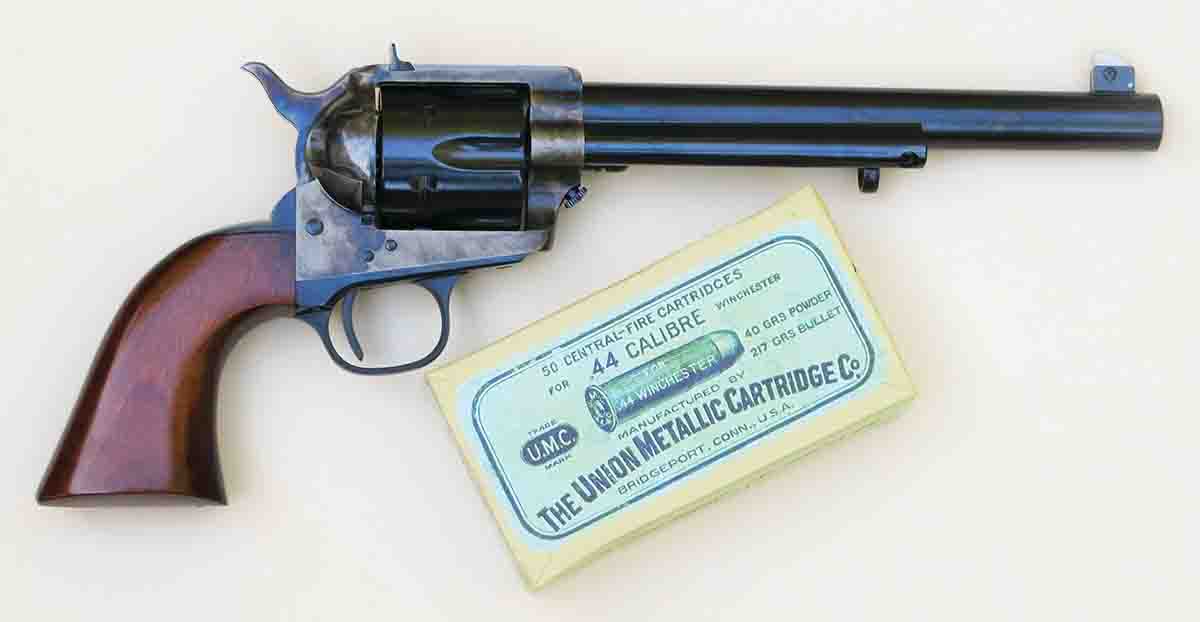
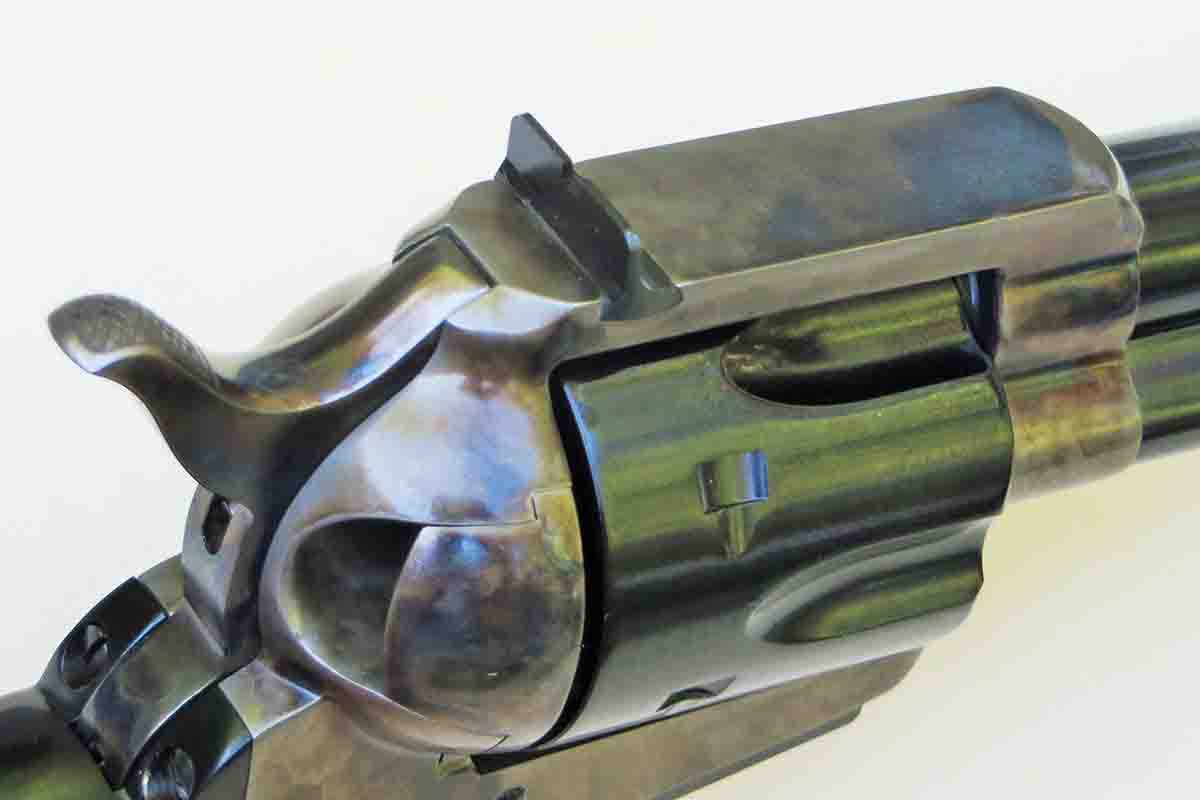
The most obvious difference between this target model and the standard frame guns, in addition to the Flat-Top frame, is the sights.
At the back, the rear sight sits in a dovetail and is easily adjusted for windage, with a small setscrew to lock it in place. The front sight is a blade pinned into a lug that is soldered to the top of the barrel. Originally, the front sight could be changed and that should be possible on this gun as well; simply drive out the pin and install a higher or lower blade.
One of the very nice features of this gun is the wide trigger. Instead of the standard narrow trigger found on most Colt Single
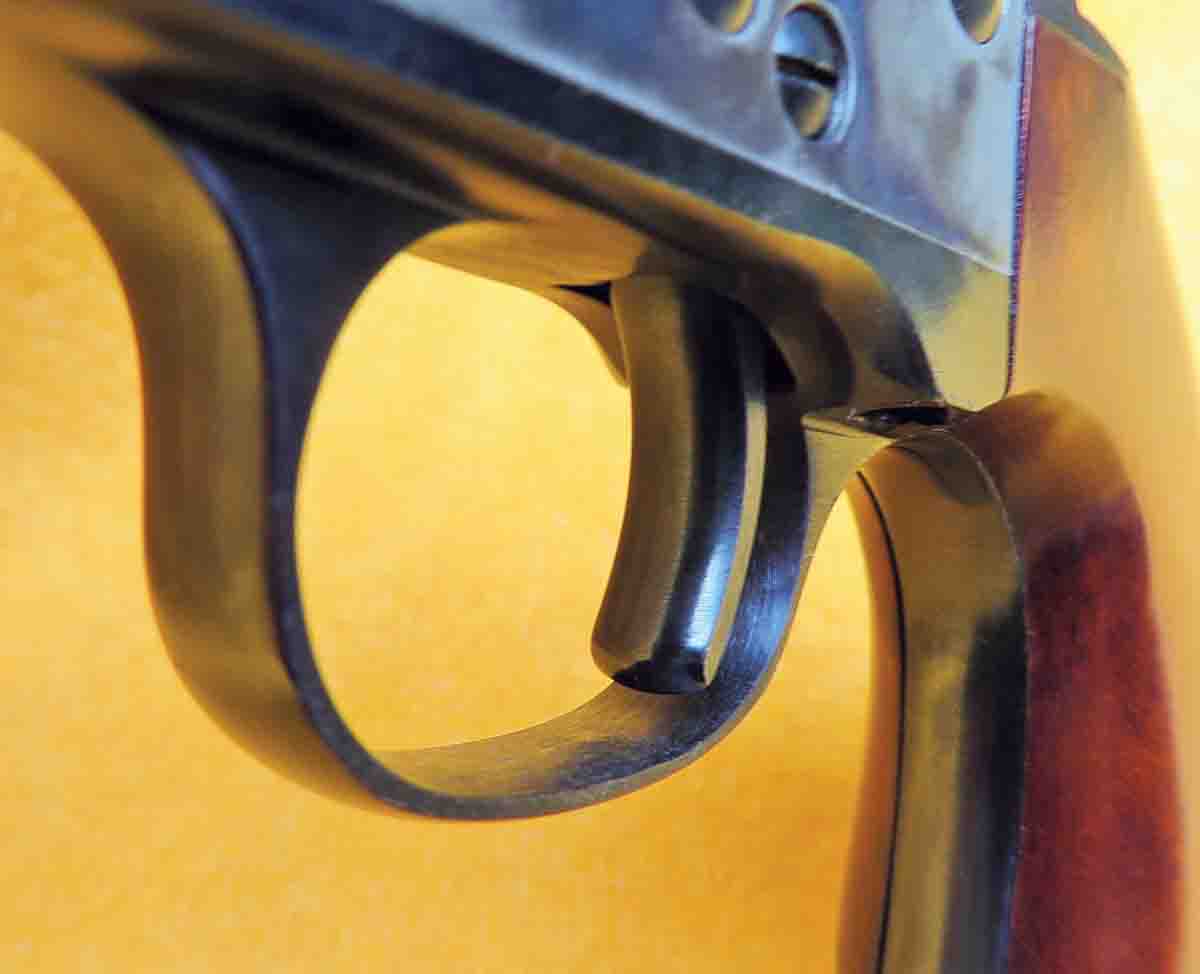
In reviewing some of the original Flat-Tops, I found that not all of them had wide triggers. Additionally, a few of the revolvers with wide triggers had their triggers checkered. That’s an interesting detail about the rare original Colts and likewise for these rather uncommon copies.
Shooting the Flat-Top in .44/40 is like shooting a very rare piece because originally, Colt made only 21 of its Flat-Top Single Action Army revolvers in this caliber (that isn’t counting the 78 Flat-Top .44/40 Bisley Models which were also made). Most of my shooting was done with black powder loads but that is certainly not a requirement. I will even admit that my best shooting was done with smokeless powder loads.
Those loads are good enough to mention in detail. First, the bullets used for all of my loads were cast from Lyman mould No. 427098, usually out of a soft 30:1 (lead-to-tin) alloy, sized to .429 inch, and lubricated with Black Powder Cartridge (BPC) lube from Montana Armory, Inc. Standard CCI Large Pistol primers were always used. The black powder load used 33.0 grains of GOEX’s Olde Eynsford powder that fills Starline .44/40 cases almost to the top. Then the powder is compressed simply by seating the bullet down on it.
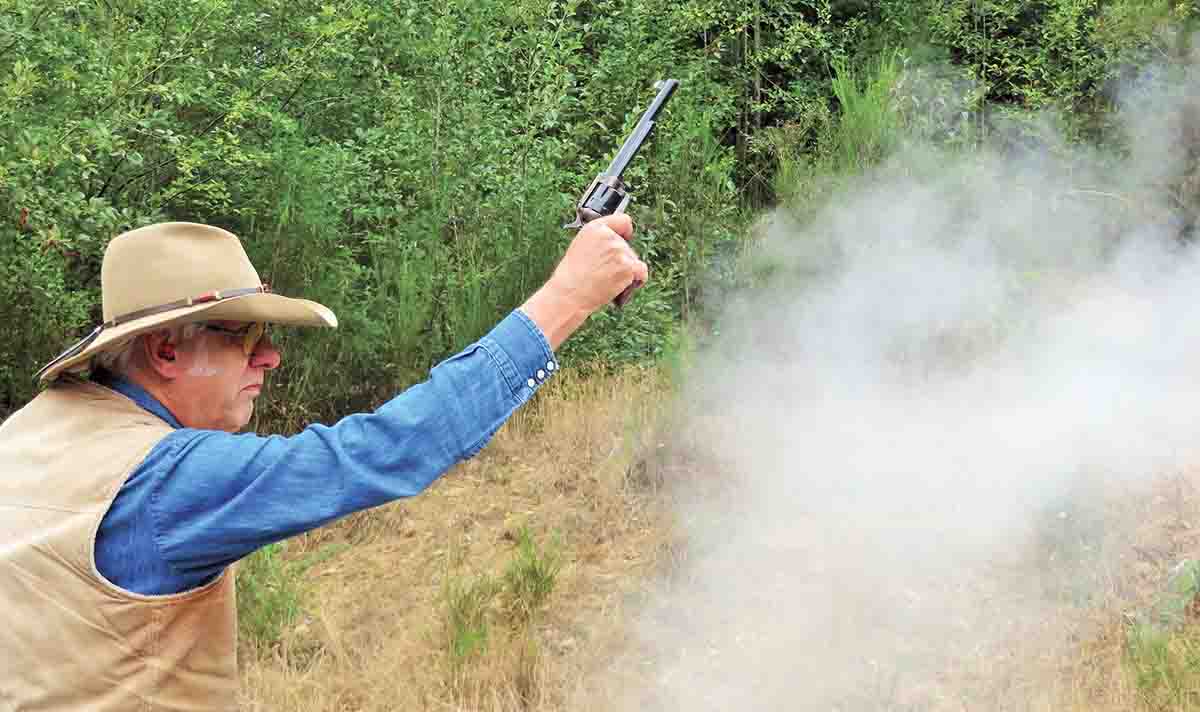
To make load identification very easy, I load black powder ammunition in Starline’s nickel-plated cases while smokeless loads go into standard brass cases.
Both of those loads seem to hit at about the same elevation. For my “accuracy check,” a couple of pistol targets were posted at 50 feet and the Flat-Top was fired from a rest. While holding the sights at 6 o’clock (right at the bottom of the black), very good hits were made mostly in the 10 ring. The smokeless load did produce a somewhat smaller group than the black powder loads, but then I only made this comparison once and a lot of human elements could be involved.
Plinking was a lot more fun, as you should guess, with the black powder loads. One small target was teasing me – a clothespin hanging on a wire at a distance of 25 or 30 yards. There was a good backstop made of dirt behind it where I could spot the hits of my shots that missed. It took me only three tries to hit that clothespin and it disassembled quite nicely on my third shot.
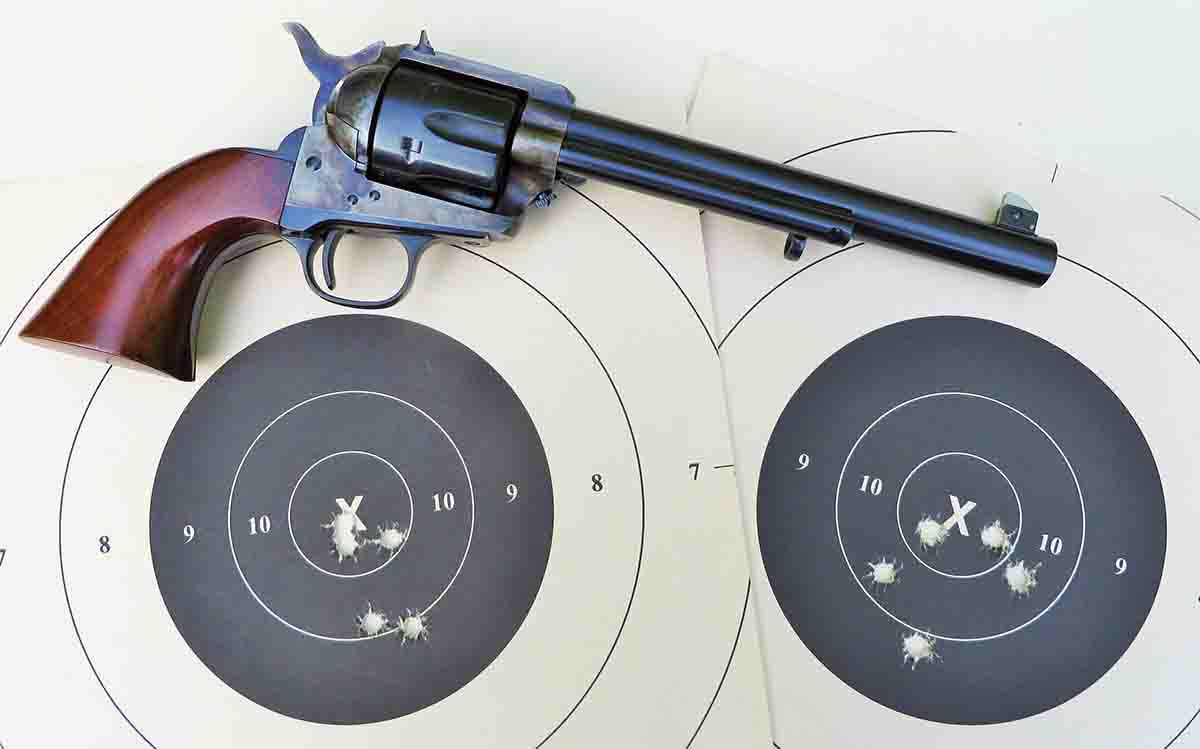
Shooting with the Flat-Top Cattleman is a real pleasure. Now, if they’ll bring back the Flat-Top Bisley Model, perhaps in .44 S&W Russian/Special, I hope my name is at the top of their list.


